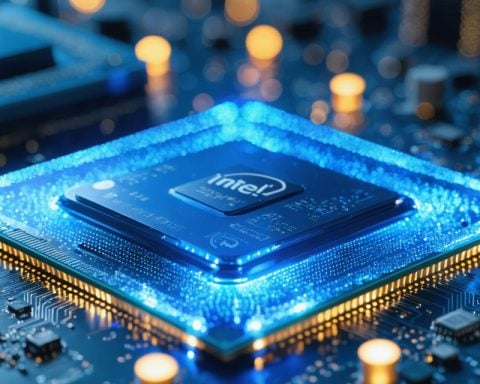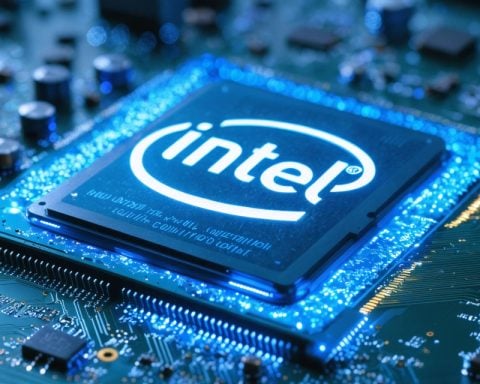- Nikola Corporation, founded in 2014, aimed to revolutionize transportation with zero-emission trucks, unveiling the hydrogen-electric Nikola One in 2016.
- Amid financial challenges, Nikola filed for Chapter 11 bankruptcy and began auctioning assets under Section 363 of the U.S. Bankruptcy Code.
- The company faces financial fragility with only $47 million and seeks new partners to sustain its HYLA fueling operations.
- Nikola’s journey from a high-profile public offering via a 2020 SPAC merger turned tumultuous with fraud allegations and the resignation of founder Trevor Milton.
- This narrative serves as a caution about balancing visionary ambitions with market realities, highlighting the risks of unchecked growth.
The saga of Nikola Corporation unfolds like a modern industrial odyssey—an epic of ambition, intrigue, and ultimate capitulation. Emerging in 2014 with daring plans for zero-emission trucks, the company dazzled investors and sparked imaginations with the revelation of the hydrogen-electric Nikola One semi in 2016. Yet, an unscripted twist awaited: financial turbulence that culminated in a stark Chapter 11 bankruptcy filing.
Nestled in the corridors of the U.S. Bankruptcy Court in Delaware, Nikola’s leadership now orchestrates a swift ballet of asset auctions under the precise eye of Section 363 of the U.S. Bankruptcy Code. Time is of the essence; the electric truck pioneer navigates a treacherous financial landscape with a scant $47 million to its name. A cash burn looms, spurring a fervent quest to unite with new partners who could keep the remaining embers of its HYLA fueling operations aglow—at least until March.
Once a vivid emblem of innovation, Nikola now stands as a cautionary tale in the annals of rapid ascent and unforeseen descent. The company went public with great fanfare in 2020 through a SPAC merger, yet soon faltered amid a whirlwind of fraud allegations that led to the resignation of its charismatic founder, Trevor Milton. As the driving force departed, faith eroded, leaving a once-resilient dream in disarray.
Now, Nikola seeks liberation through the auction block, hoping to transcend its past and regain footing under new stewardship. This chapter in Nikola’s narrative reminds us of the delicate equilibrium between visionary pursuits and the pragmatic demands of the market. A vision untethered by reality can sometimes chart a course straight into the abyss.
The Rise and Fall of Nikola Corporation: What Went Wrong and What’s Next?
How-To Steps & Life Hacks: Understanding Chapter 11 Bankruptcy
For companies like Nikola Corporation, navigating Chapter 11 bankruptcy can offer a path to restructuring and potential recovery. Here are the steps typically involved:
1. Filing for Chapter 11: This is initiated by the company when it cannot meet its financial obligations. It allows the business to continue operations while restructuring debt.
2. Automatic Stay: Filing halts all collections and lawsuits against the company, providing a reprieve to reorganize.
3. Formulating a Plan: The company proposes a reorganization plan that outlines how it will emerge from bankruptcy, often involving restructuring of debt and business operations.
4. Asset Auctions: Under Section 363, the company can sell assets to raise capital. This is where Nikola currently stands, auctioning off to sustain operations.
5. Approval and Implementation: The plan requires approval from creditors and the court. Once confirmed, the company can implement it to stabilize financially.
Real-World Use Cases: Hydrogen-Electric Vehicles
Despite its setbacks, Nikola’s ambitious vision for zero-emission, hydrogen-electric trucks still holds potential in sectors such as:
– Long-Haul Transportation: Nikola’s trucks were designed for efficiency in long-distance freight shipping, targeting reduced emissions in the transportation sector.
– Clean Energy Initiatives: The integration of hydrogen fuel cell technology aligns with global movements towards reducing carbon emissions and dependency on fossil fuels.
Market Forecasts & Industry Trends
The electric vehicle (EV) market, including hydrogen fuel cell technology, continues to grow:
– According to a report by Allied Market Research, the global EV market is projected to reach $802.81 billion by 2027, up from $162.34 billion in 2019.
– Hydrogen fuel cells are gaining traction, especially in sectors that require heavy-duty vehicles, thanks to their longer range and faster refueling times compared to battery electric vehicles.
Controversies & Limitations
Nikola faced significant controversies that contributed to its financial difficulties:
– Fraud Allegations: Accusations included misleading investors about product readiness and capabilities, costing Nikola its credibility.
– Leadership Challenges: The resignation of founder Trevor Milton after these allegations created a leadership vacuum and trust issues among stakeholders.
Pros & Cons Overview
Pros:
– Innovative Technology: Potential for hydrogen-electric trucks to revolutionize transport.
– Environmental Impact: Low emissions align with environmental goals and regulations.
Cons:
– Financial Instability: Ongoing financial struggles and bankruptcy proceedings.
– Market Competition: Strong competition from established players in the EV market.
Actionable Recommendations
If you are an investor or someone interested in the clean energy sector:
– Stay Informed: Follow market trends and regulations around hydrogen technology and EVs.
– Evaluate Credibility: Carefully consider the history and transparency of companies in this sector before investing.
– Diversify: While hydrogen technology is promising, diversify your interests to mitigate risks associated with startups like Nikola.
For more insights on the electric vehicle industry, visit Tesla and Toyota.
Understanding Nikola Corporation’s current situation highlights the intricacies of innovation within the constraints of practical market demands. Keeping a vigilant eye on developing trends and corporate governance can provide valuable insights into future investments and technological advancements in this dynamic field.



















